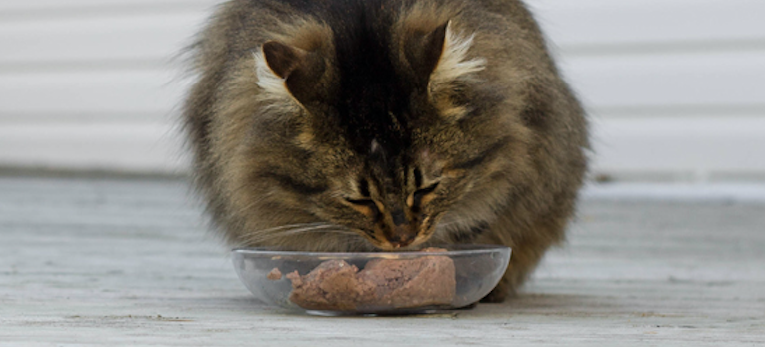How to make community cats better neighbours
by Ontario SPCA and Humane Society | Interesting | October 4, 2019

The Ontario SPCA and Humane Society has an incredible network of community cat caretakers in the province. Helping these cats, and human neighbours, co-exist, is definitely possible. The ASPCA has an incredible resource on their website to help with this, 5 Tips to Make Community Cats Better Neighbours.
Trap-Neuter-Return & Vaccinations
The first tip the ASPCA shares is to recommend the vaccination and Trap-Neuter-Return (TNR) of your entire colony. Why?
“Once cats are spayed and neutered, some major nuisance behaviours will cease: spraying, fighting, yowling and the seemingly endless supply of new kittens,” according to the ASPCA.
If your neighbours have concerns about rabies – vaccination will head off those fears. TNR is also beneficial for reducing pet overpopulation, and the stresses of mating and childbirth.
Feeding stations
The ASPCA also recommends responsible feeding practices and keeping feeding stations neat and clean. Basically what that looks like is only giving the cats enough food that they can consume it within a half hour. If there is leftover food, the ASPCA says this can draw pests to finish off the meal.
Another concern the ASPCA points out if that if you’re using disposable plates, that can cause trash concerns for neighbours. This is why they recommend reusable bowls – they have to be cleaned, but there’s less risk of waste.
If you overfeed your cats, there may also be wildlife concerns.
“Overfeeding of cats may attract rodents, raccoons, skunks, opossums, or other wildlife. Because some of these animals come out at night, you may need to remove all uneaten food after dark. Adjust your feeding routine to address the specific wildlife at your feeding site,” the ASPCA.
Prevent trespassing
If a neighbourhood concerns is that cats will use gardens or lawns as their litterbox, the ASPCA has a few low-tech humane deterrents to try:
- Deer netting over raised garden beds
- Plastic forks or bamboo chopsticks staked in soil
- Plastic carpet runners (spiked side up) or specialty mats placed on soil
- Chicken wire under mulch
- Scented organic material such as citrus peels, eucalyptus or filter-brewed coffee grounds (brewing the coffee removes most of the caffeine, which is toxic to cats)
Litterboxes
To help deter cats from using neighbour property as a litterbox, the ASPCA also recommends providing one or more outdoor litter boxes on your property that are in a quiet, sheltered space, protected from the elements.
Just like with cats in your home, it’s important to clean it regularly, especially during hot weather.
Importance of shelters
Having a shelter for your cats is so important. This gives them a safe, dry place to rest, and also keeps them from searching for a suitable shelter amid your neighbour’s property.
The ASPCA says this also has another added benefit.
“Cats will follow their shelter, and can be discouraged from climbing on cars or other private property by gradually moving their shelters away from problem areas.”
Read more on this important topic on the ASPCA website!
Learn more about the Ontario SPCA’s community cat program
The Ontario SPCA and Humane Society developed feral cat support programs to assist feral cat caretakers in managing their colonies. As a direct result of animals left unaltered and abandoned, cat overpopulation is an issue across Ontario and has resulted in a staggering number of feral cats. A trap, neuter, vaccinate, return approach is the only economically viable and truly humane approach to feral cat population stabilization.
Learn more: https://ontariospca.ca/what-we-do/humane-education/community-cats/
Categories
Testimonial
Speaking for the ones who can’t speak for themselves
Keep up the good work speaking for the ones who can’t speak for themselves. A society who cares for their animals is a better society. Thanks for your good work!
